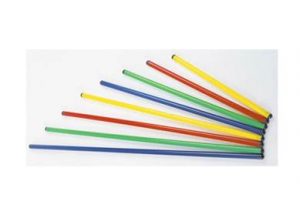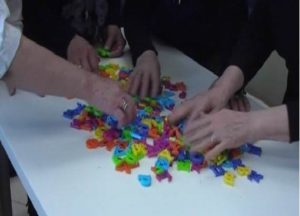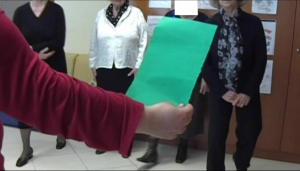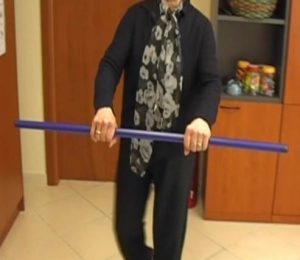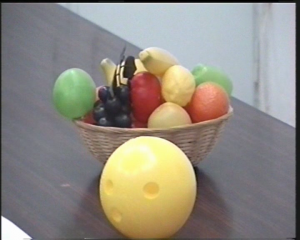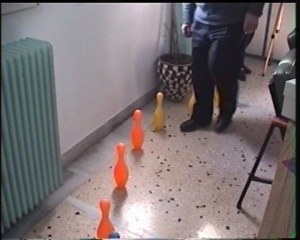
Basic information
Definition:
Kinesiotherapy is a Cognitive Training Intervention with a big variety. The program includes visuomotor, and verbal-kinetic tasks including visual and verbal kinetic stimuli, respectively. There are different types of kinetic exercises and cognitive abilities that are designed to practice or train. The tasks are ecological because they are recruited from the patient’s daily life.
Objectives
This activity is consisting of balance exercises, walking and coordination of movements that require verbal and visual skills, as well as attention skills through dual task. The kinetic exercises are visual and verbal stimulation, aiming at maintaining and improving mental capabilities. A secondary objective is to improve the balance, gait and joint movement range.
This intervention was designed to improve also executive function. It directly enhance visual and auditory, selective attention, shifting and switching of attention, and dual task. Through consolidation of attention training and generalization, we expected improvement also in short-term and long-term memory. In addition, these games have body impact through the physical exercises (balance, walking, and movements).
Duration
Duration depends on the number of commands and the level of difficulty. One task (game) will be normally between 10 to 15 minutes. This can be enlarged adding additional rules or incentives.
Cost:
Free
Reference
Topics in Geriatric Rehabilitation October/December 2011 – Volume 27 – Issue 4 – p 289–300 doi: 10.1097/TGR.0b013e31821e59a9
Development
Participants
Participants’ profile:
- Dementia level: game can be adjusted to match mild to moderate dementia levels.
- Physical requirements: Not high in general. For highly limited users, the game can be played using an assistant that show to the user the instructions. Good functionality at arms and hands.
Number of participants: This game can be played with any number of players (better more than 3 people).
Material and requirements: simulation material
Materials needed to develop the game:
- In general: a table and a chair are not so important for this activity
- Technical materials:
- cards with colors (4 different colors are enough),
- wreath,
- boards with letters, shapes and numbers,
- corridors with numbers,
- balls,
- wands,
- rings,
- cones.
Environment considerations: Good lighting levels. Not very noisy room.
Support needed
Professionals / relatives can:
- Explain the instructions of the game and their variants
- Give clear advices during the game.
- Supervise the correct development of the game.
- Encouraging attitude that provides comfort to players.
- Change the level of the game, if it is too difficult.
Starting point:
Prepare the technical materials (e.g. cards with colors). Explain the instructions by performing an example. Start with a first check with few people and fix the mistakes.
Development:
Here is an example of one visual active movement exercise:
- Begin with instructions: They have to do some certain steps (in front, back, right, and left) which depend on the card’s colour that you (the professional/relative) kept on your hand. For example, when you lift up the green card the participants have to do one step in front, with the blue, one step back, etc. Finally, they have to remember how many times each colour appeared. So, the participants have to remember the instruction to complete the attentional task and to recall information concerning previous cognitive motor tasks at the end of the session.
- The participants have to stand up and spread out in a place of the room and to look at the professional/relative.
- Start with the first color card. Lift up the card with your hand to be seen clear from all the participants.
- Watch if they do the right certain step e.g. one step in front. Participants have to pay attention to the instruction. The shift of attention is practiced as the patient shifts attention from one instruction to another, or from one step with their body to another.
- Then, continue with another color with the same rules.
- Perform 6 cards at least
- The game ends when they answer how many times each colour appeared. The winner is the person with the correct response.
Additional information
Variants of the game:
The intervention has tasks with an increasing degree of difficulty varying according to the baseline cognitive and kinetic performance of the participants.
Additional rules can be added, or even playing this game in combination with another. Another example is:
- The participants have to stand up and spread out in a place of the room and to look at the professional/relative.
- They have to move a wand with their hands. Explain that, you will tell them a story with some products (vegetables, fruits, sweets) of a supermarket. Every time, they will hear one kind of vegetables, they have to put the wand down. When they hear one kind of fruits, they have to lift the wand up, etc.
- Start telling them the story, that you went to the supermarket and you bought 4 apples, 10 potatoes, 5 bananas, 3 chocolates, 6 carrots, etc.
- Watch if they do the right certain movement, one for each product.
- The game ends when they answer how many times each product referred. The winner is the person with the correct response.
Alternative games:
Similar AD-GAMING games:
Assessment:
- Time needed to perform the game
- Number of mistakes
- Help needed
Basic information
- Prepare the materials (cards with colors, wreath, boards with letters, shapes and numbers, corridors with numbers, balls, wands, rings, and cones)
- Professional/family gives a brief explanation. Explain the instructions by performing an example.
- Start with a first check with few people and fix the mistakes
- Ask for any questions/doubts
- The participants have to stand up and spread out in a place in the room
- Start the game
- Observe what’s happening, if players need help to follow the instructions, you can guide them.
- Ask them the questions
- Assessment
![]()





